I had the opportunity to visit Temasek Polytechnic’s (TP) hydrogen fuel cell labs and view their award-winning Eco-marathon race vehicles which won this year’s Shell Eco-marathon challenge. You might remember my first look at the Eco-challenge a couple of years back. Let’s take a look at their engineering labs, and a showcase of Temasek Polytechnic Eco Challenger Hydrogen racecar.

Aviation Lab
There was an introductory showcase of the facilities in Temasek Polytechnic by faculty staff members. This includes the aviation lab which notably houses an indoor netted area where you can fly large test drones indoors.
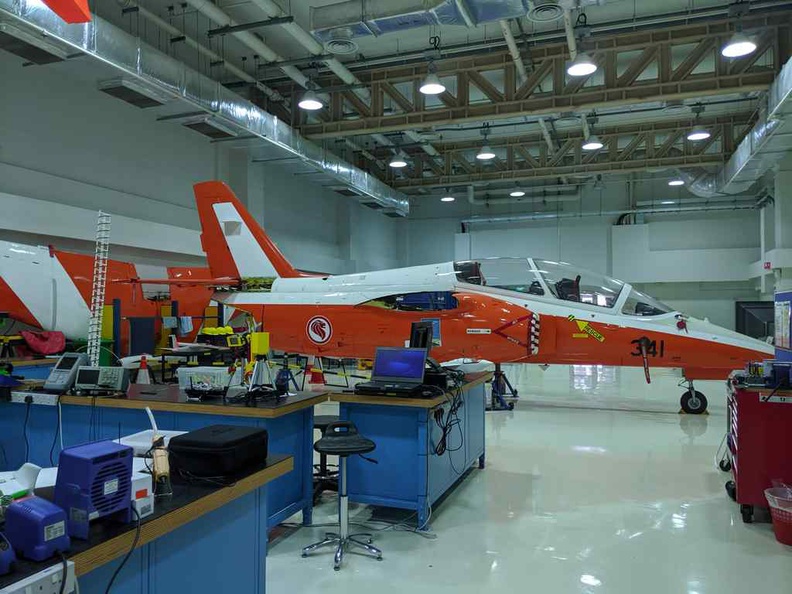
Moreover, this is despite Temasek Polytechnic being within a kilometer from an aerodrome. Remarkably, drones can be legally flown here in large outdoor netted cages.
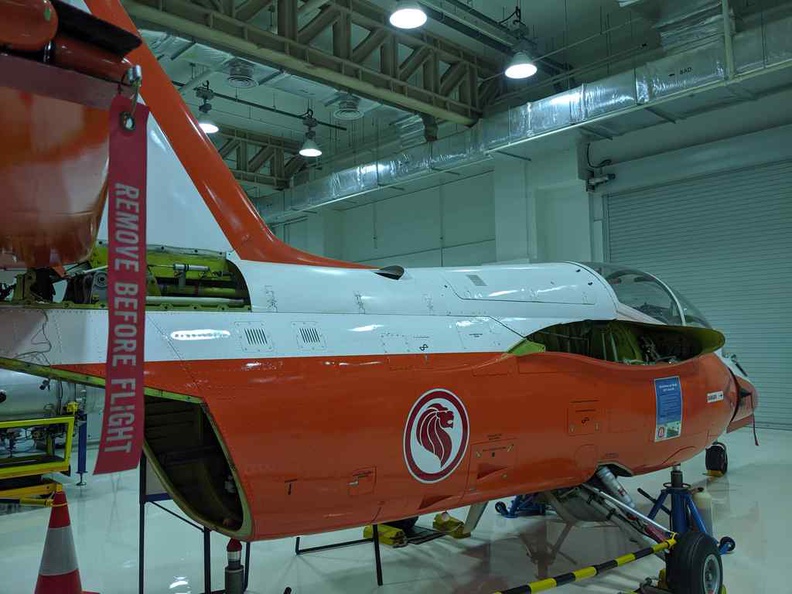
This setup allows the polytechnic to legally fly and test their drone and fuel cells without hindered by aerospace restrictions and compromising safety.
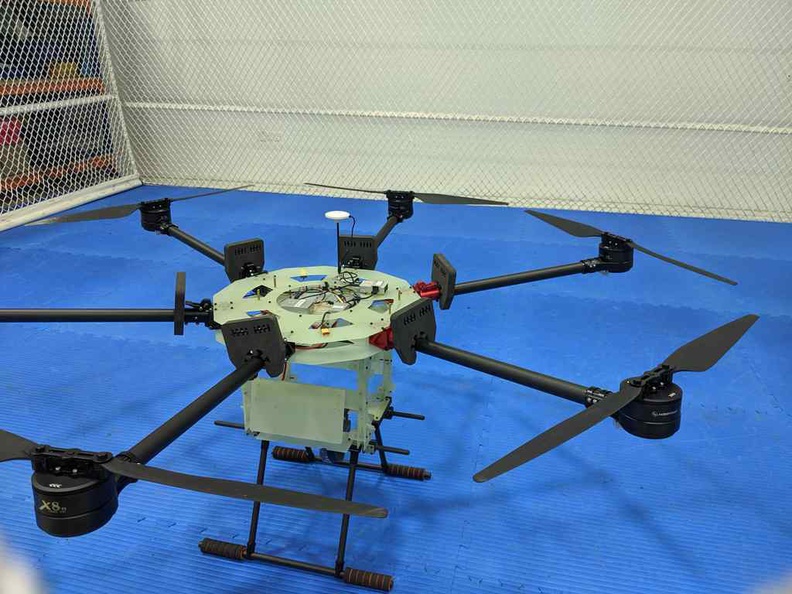
Hydrogen the next big thing?
Additionally, with global shifts towards clean energy, come the renewed emphasis of the development and push for green vehicles. Other notable works in this sector of the Polytechnic includes an extensive fuel cell research lab. The Polytechnic touts that fuel cells are the next big thing in mobile power sources. With added benefits of higher power density, longer runtimes and ease of refueling than current Li-ion batteries.
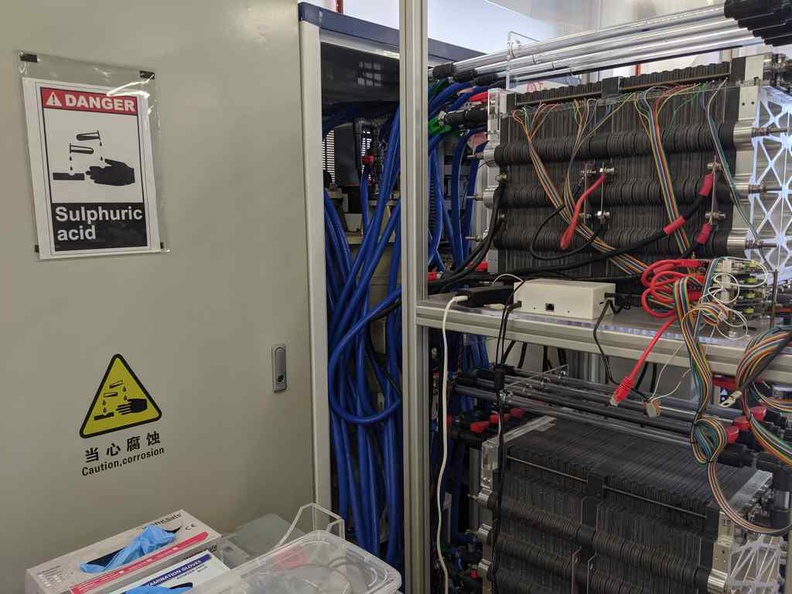
Amazingly, these fuel cells can be miniaturized and be made lightweight enough to replace current li-ion batteries. On applications, for example, while an RC quadcopter drones can fly for about 30 minutes on average, a fuel cell-modified drone quadcopter can operate for at least 2 hours.
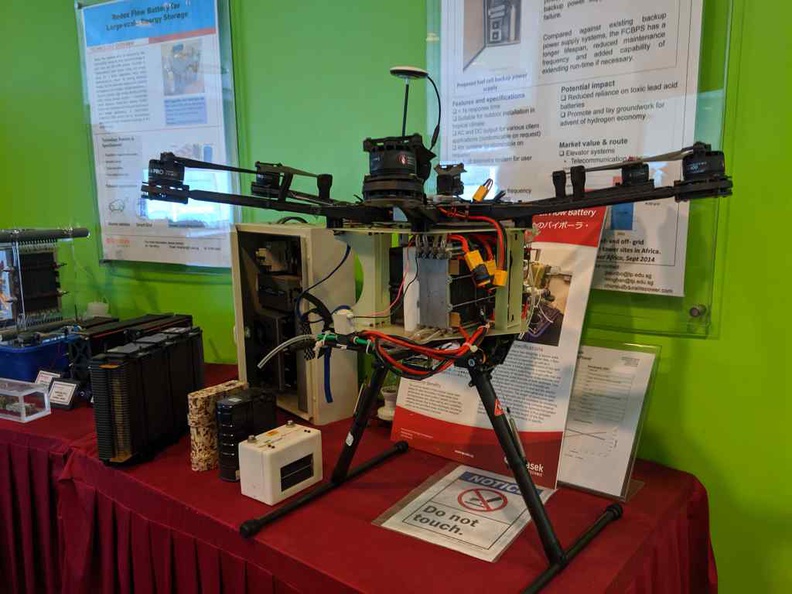
This makes it useful for extended surveillance or inspection use cases. Moreover, these fuel cells also do not suffer from charge loss over time. Hence, this allows them to be used as emergency backup power which standby for years at a go.
Introducing the Eco Challenger
I was introduced to the Temasek Polytechnic Eco Challenger Hydrogen racecar and the eco-racing engineering team behind it. The race car runs on a mini hydrogen fuel cell power pack. These fuel stacks has weight and size advantages. The team put this edge of their competitors in the Eco Challenger, with benefits of a much lighter and more energy-efficient race vehicle.
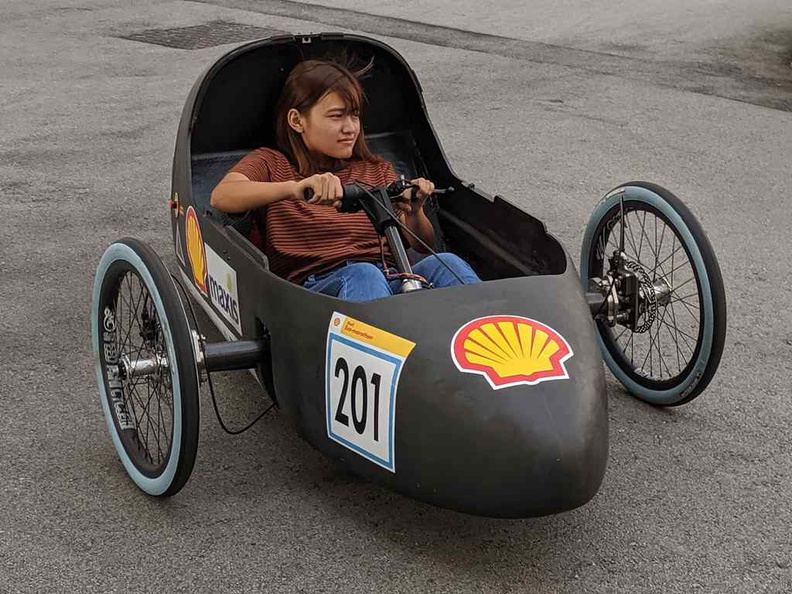
Also the racing team students were around to showcase the fruits of their labor. In their workshop, team leader Chng Tze Chen was around to introduce us and run us through presentation and actual walkabout of the actual race car which participated in the Shell Eco-marathon race challenge.
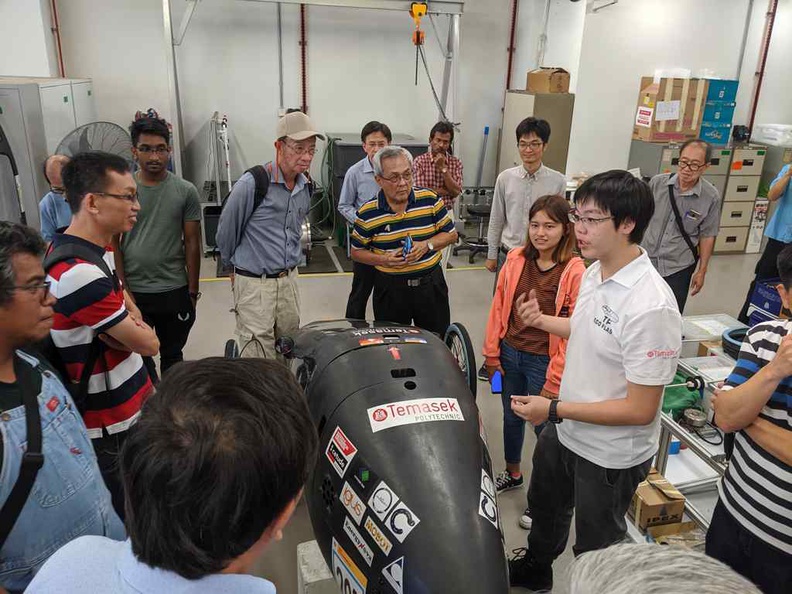
The Shell Eco-marathon
In a nutshell, the Shell Eco-marathon is a unique global STEM program (Science, technology, engineering and maths). It aims to engage students to design and build ultra-energy-efficient vehicles which run on clean energy. They put their engineering skills to the test out on the race on-track in a competition.
Furthermore, this year’s annual Shell Eco Marathon Asia 2019 race was held at the Sepang International Circuit. The track is located in Selangor, Malaysia. From 29 April to 2 May, student teams at the Eco-marathon compete with vehicles with fuel-efficiency as goals.
Built right here in TP
The racing co-circular team comprises of active Polytechnic students. There, I was introduced to the TP team, including their racing driver. The team comprises of 7 students from the Diploma in Mechatronics and 2 students from the Diploma in Clean Energy.
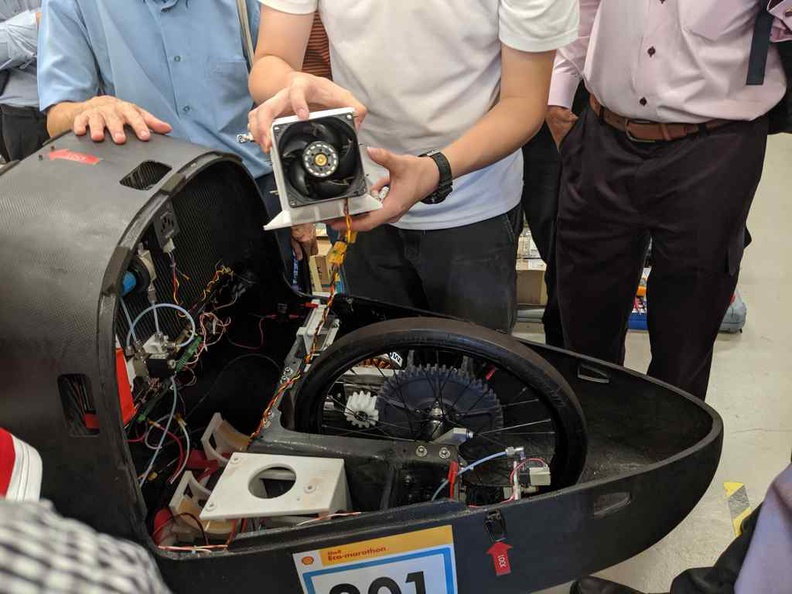
Moreover, what made the team’s spectacle more amazing is that the students have no prior experience in designing and building a hydrogen-powered car. These engineering skills were learnt in-school and on-the-job. Also, this is all thanks to their polytechnic and their team of committed teachers who supported their journey, and to represent Singapore in Shell Eco-marathon Asia.
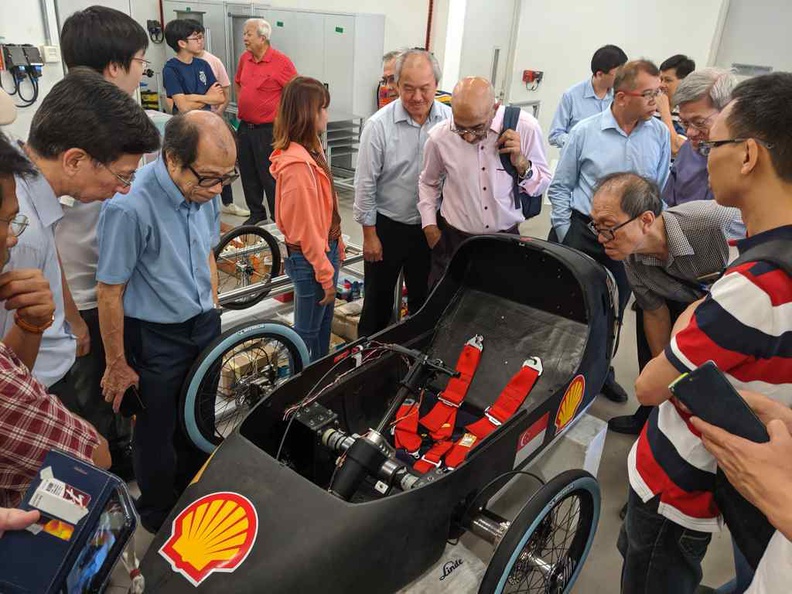
Additionally, each team member has an engineering ownership of the team, each tasked with designing, building the car. With their drawing plans and body shell fabricated by third party contractors. The brainchild of their combined efforts is the Eco Challenger. It is a streamlined, hydrogen-powered car that punches above its weight. Additionally, TP’s race car this year was lighter (by 30%), more aerodynamics and fuel-efficient than last year’s model.
A race of efficiency
Additionally, the Eco-marathon race comprises of a few categories focused on engineering excellence and efficiency. The Hydrogen Category of the race measures fuel efficiency (hydrogen consumed) as part of the judging criteria. Here, the lower the amount of hydrogen consumed per unit time constitutes to a better vehicle. This is unlike traditional races, where the winner is first and fastest.
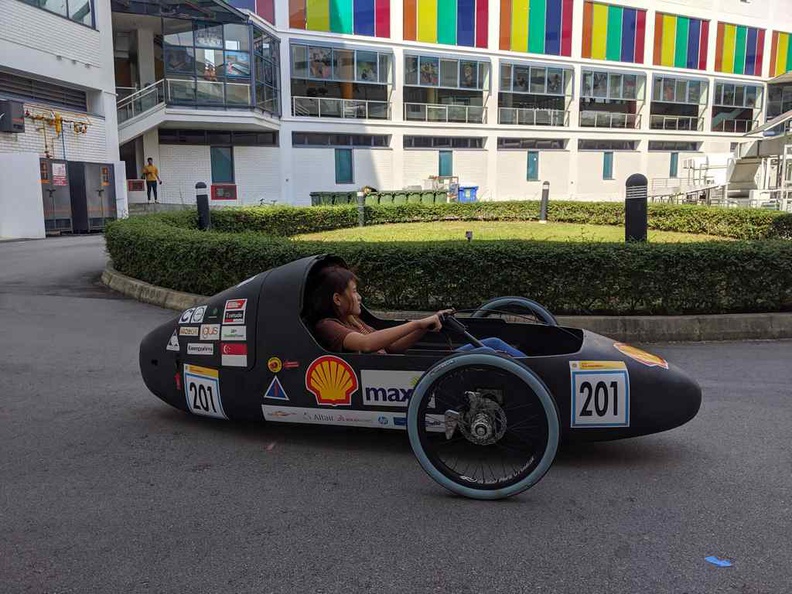
Moreover, race conditions involves contesting teams driving their self-designed vehicles around a 10km race circuit consuming least amount of hydrogen. Moreover, each team has 6 attempts to complete the circuit in the most efficient manner. Their best attempt with the lowest consumption is recorded. Additionally, before the race, all competing race cars also had to undergo a technical inspection by race marshals. This is to ensure that teams conform to strict specifications as specified by the race rulebook.
Furthermore, the Urban Concept category aims to create a road-going car complete with working lights and signals. It is a race to run in-entirely with limited fuel reserves without refilling. A race which the winning team have to cross the finish line first without running out of fuel.
A winning recipe
Moreover, Temasek Polytechnic’s Eco Flash won gold in the Prototype Hydrogen category at their debut at Shell Eco-Marathon Asia. They came, saw and conquered. This is despite this year’s more demanding and undulating Sepang track which included several fuel-consuming uphill climbs.
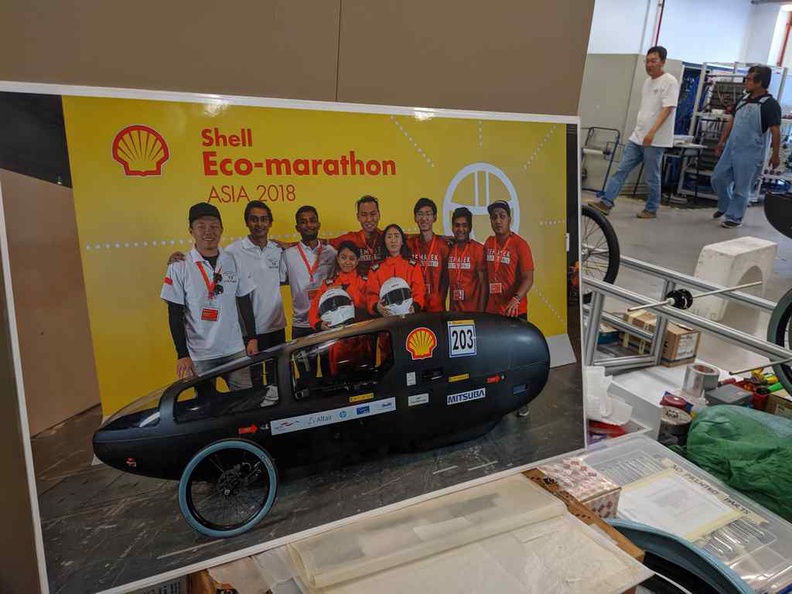
Highly efficient
Commendably, Temasek Polytechnic Eco Challenger Hydrogen racecar results were exemplary. TP’s score of 403.3km/cubic meter of hydrogen easily topped the charts. Easily beating the next runner-up (Ngee Ann Polytechnic) score of managed 122.5km/cubic meter. This, coupled with a race strategy which not only considers engineering and technical excellence by race and track strategies such as using terrain of the race track to their vehicle’s advantage. This allowed them to beat the leading Indonesian team in the race.
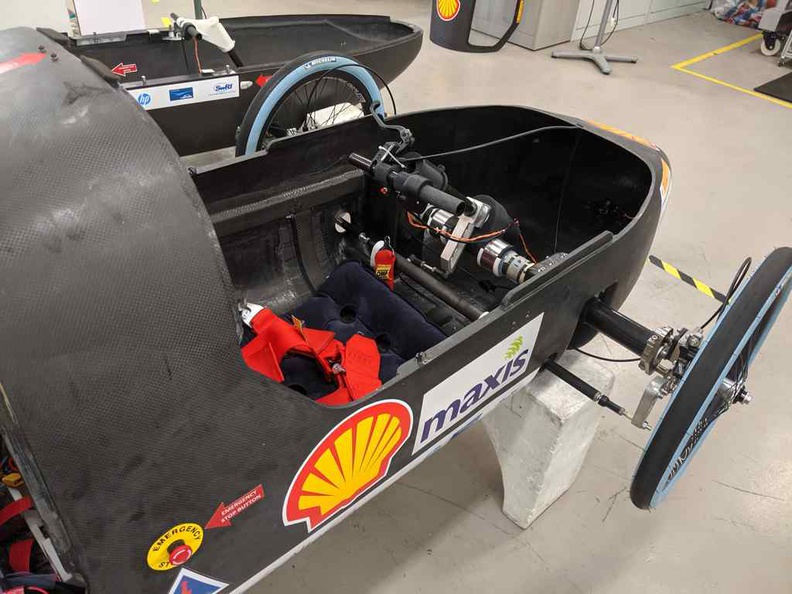
Moreover, topping up the podium are three teams also from Singapore’s tertiary institutions. The Nanyang Technological University team also sets a new Shell Eco-marathon Asia record. The mint them as first Singapore team to win the Drivers’ World Championship Asia Qualifier.
Also, that was more impressive was that team TP beat the top 3 teams from each of all fuel type in the UrbanConcept category at the Drivers’ World Championship (DWC) Asia qualifier. These includes Hydrogen Fuel Cell, Internal Combustion Engine and Battery Electric.
All in all, TP’s win showcased and sealed the polytechnic’s School of Engineering as an expert in mechatronics and clean energy. This impressive race result is down to TP’s expertise in their field of hydrogen fuel cells. It is pleasant to know that TP is doing a good job in not only showcasing the fruits of their labor. This not only making a point of themselves being a leader in hydrogen fuel cell technologies.
Article update (Jan 2022): To reflect TP Eco Challenger team leader name as Tze Chen instead of Xu Yang as previously written.
